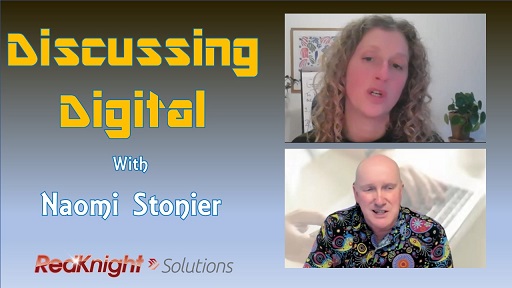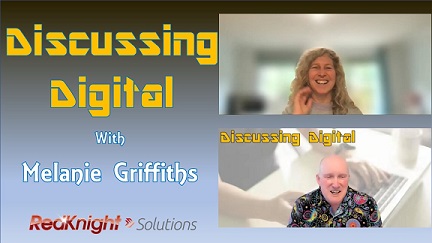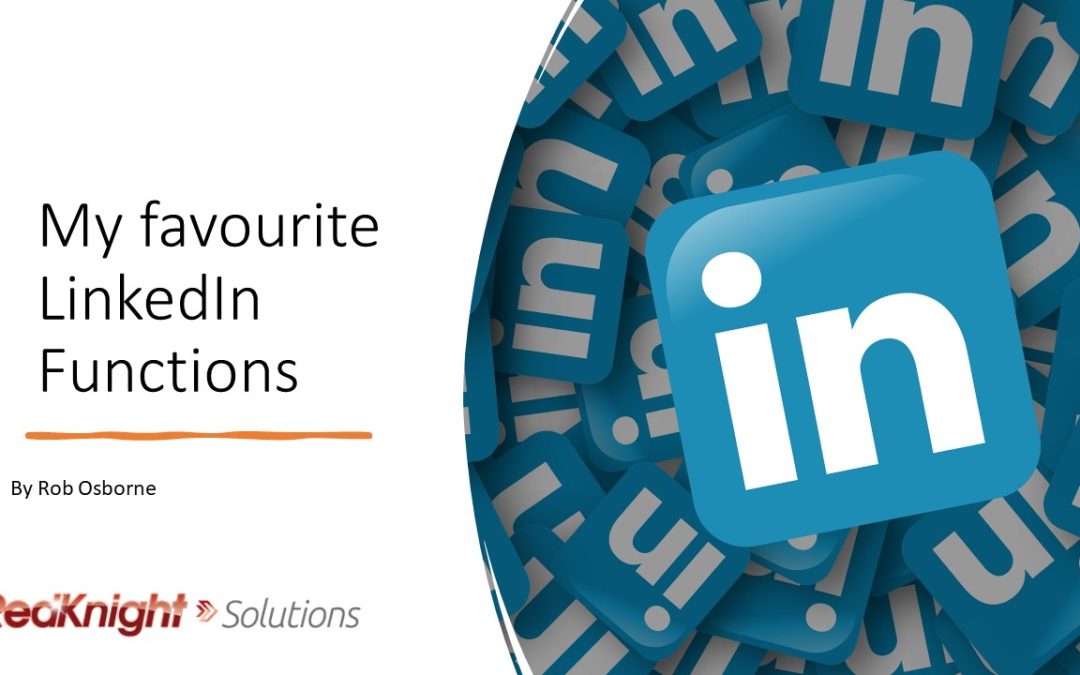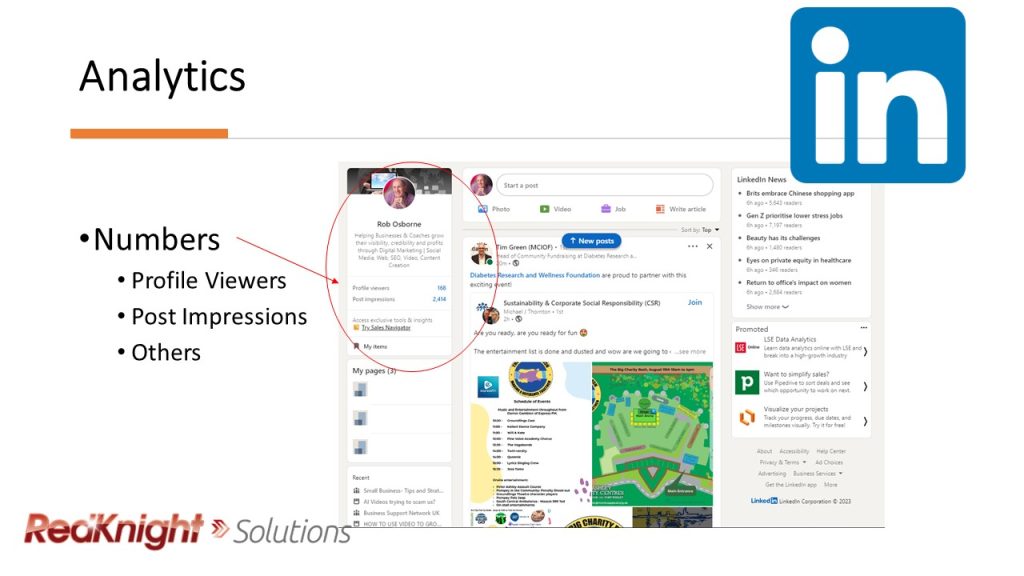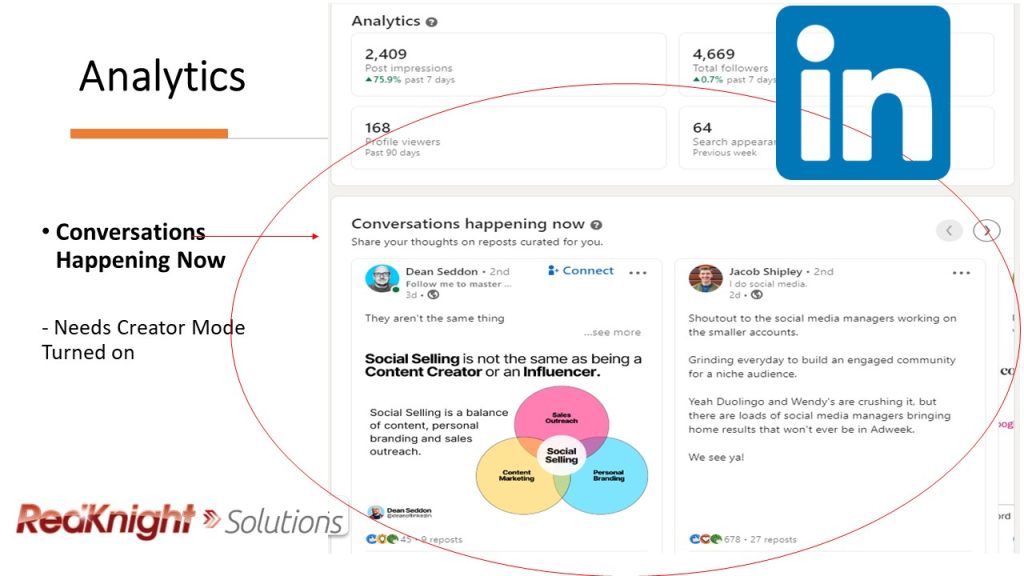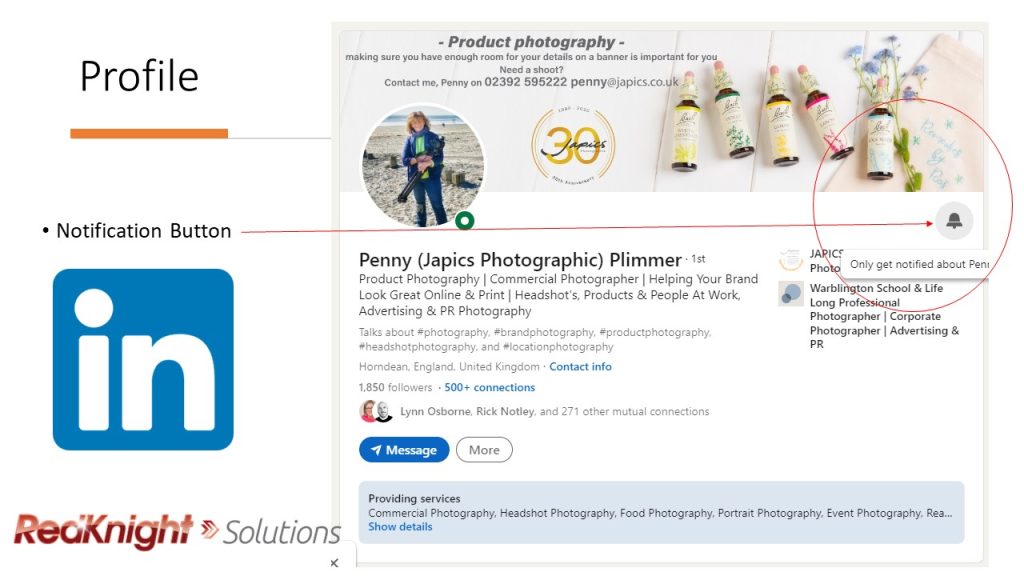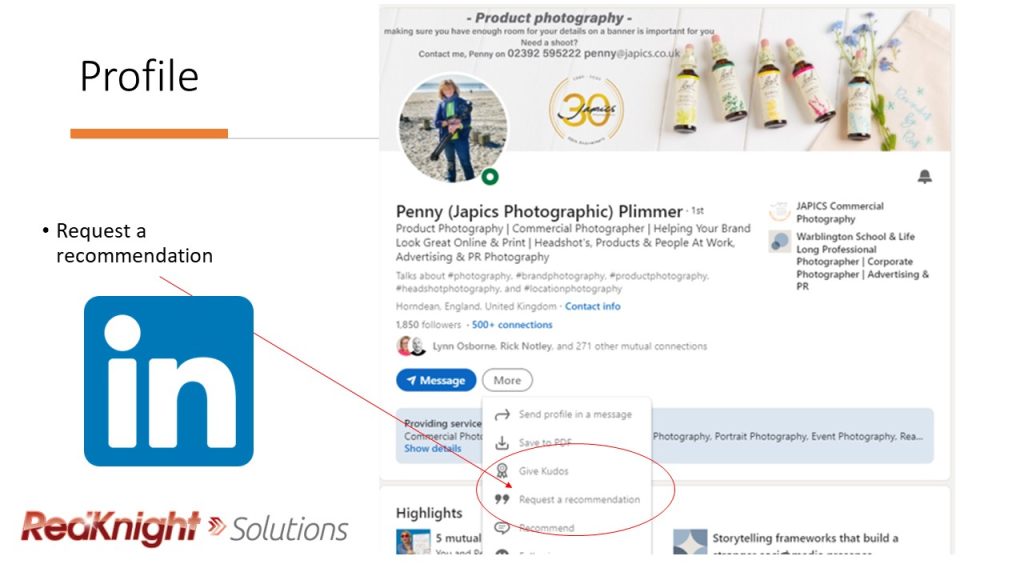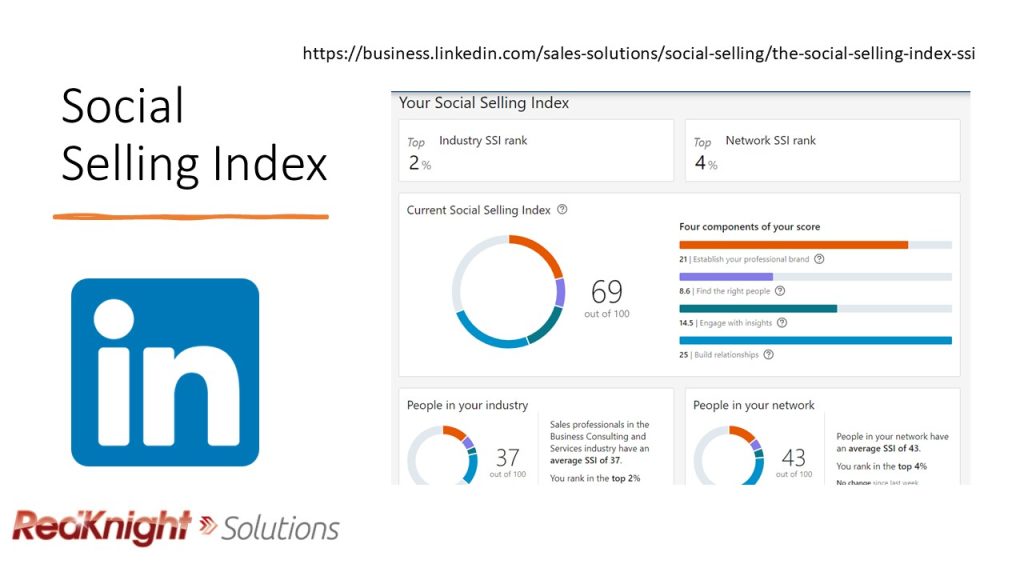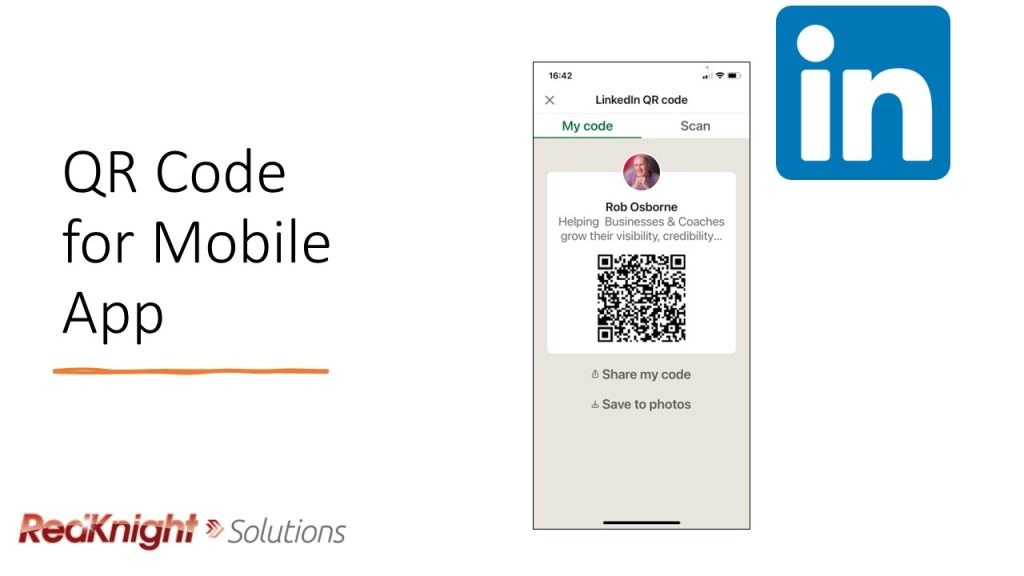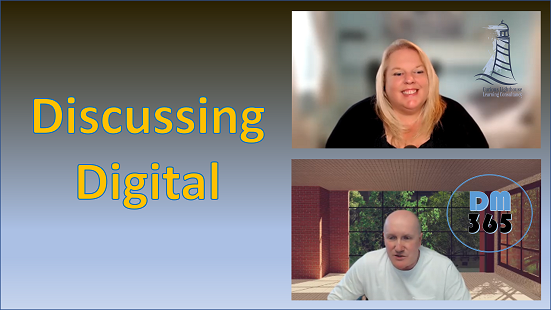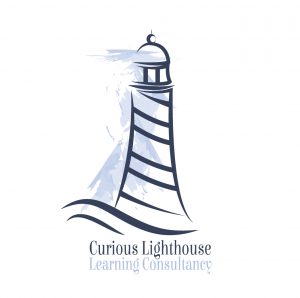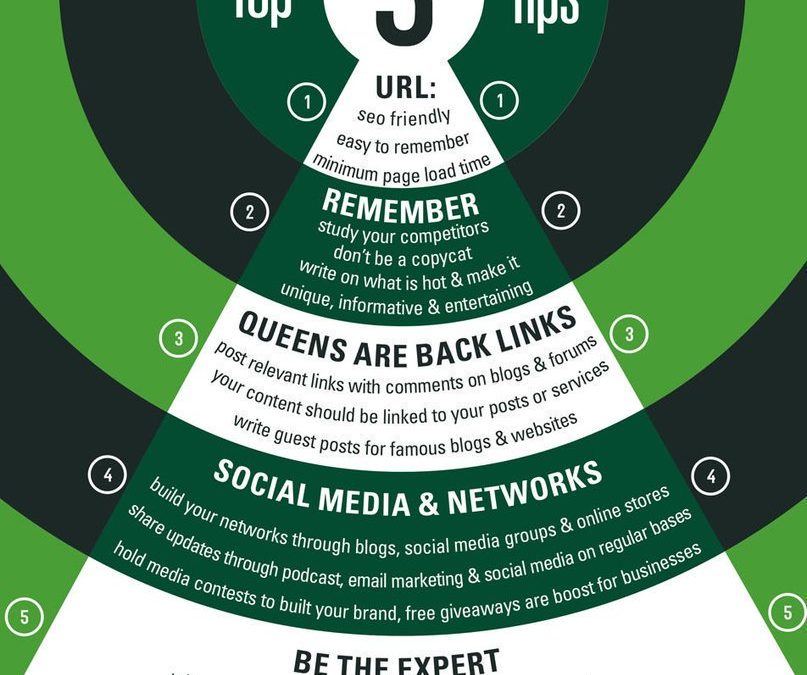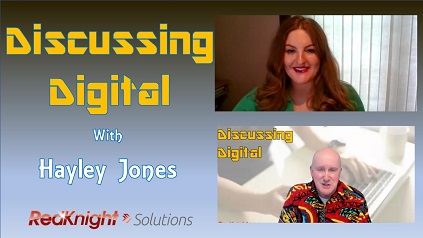
Discussing Digital with Hayley Jones – Transcript
In this episode, Hayley Jones, owner of HB Associates, an accountancy firm, shares her digital marketing strategies. Despite being an introvert, Hayley has embraced TikTok as a platform to record videos and has improved her skills with practice. She uses CapCut to edit her videos within the TikTok app. One of her videos has gained tremendous popularity with over 12.5k views.
Hayley’s content planning involves posting three videos per week on TikTok. She ensures that her content varies from informative to fun videos, catering to her audience’s interests. Additionally, LinkedIn plays a significant role in her digital marketing strategy. With about 100 new followers each month, Hayley started generating inquiries around the 7-8 month mark.
Engagement is crucial for Hayley, and she spends time daily commenting and engaging with others’ posts on LinkedIn. While she schedules posts for Facebook, Instagram, and Threads, she prefers to engage more organically on LinkedIn.
Looking forward, Hayley plans to focus more on her website and Google Business Profile, with guidance from her website developers. She also expresses an interest in learning more about email marketing before implementing it into her strategy.
Hayley’s key advice for digital marketing success is consistency within realistic goals. She emphasizes that businesses should not feel pressured to join every new platform but should focus on what works best for their specific business and target audience.
Listeners can connect with Hayley on various platforms, including TikTok (@the_redheaded_accountant), Instagram (@hbassociates_accountants), LinkedIn, and Facebook under HB Associates.
This transcript of Discussing Digital with Hayley Jones has been produced using the transcription function of Easy-Peasy.AI
You can find out more about Easy-Peasy-AI here
Transcript of Discussing Digital with Hayley Jones
**Rob Osborne**:
Hello everybody and welcome to this edition of Discussing Digital and today I’m discussing digital marketing with Hayley Jones who’s an accountant. Hayley would you like to introduce yourself, your business and then just sort of talk a little bit about your digital marketing
**Hayley Jones**:
in general and then we’ll sort of go from there. Yeah so my name is Hayley Jones and I own and run the accountancy firm HB Associates and so we are a bunch of chartered accountants who look after all your compliance taxation needs. In relation to digital marketing I tend to try and really have a presence across every kind of channel but I very much focus on the ones that tend to work more for me. Those tend to be my personal
**Rob Osborne**:
LinkedIn and TikTok seems to be quite responsible too. Oh all right well because I’m fascinated by TikTok at the moment and we were having a bit of a chat beforehand about it so let’s dive straight in with TikTok because obviously everyone knows that TikTok’s a bit about video and content and so let’s talk to start with about the challenges you said you face with recording video but then actually I’m going to
**Hayley Jones**:
encourage everyone to go and look because Hayley’s videos are brilliant. Yeah I mean for me I’m quite an introvert person probably that is a bit stereotypical accountant but I like to think I’m not a stereotypical accountant and so the whole concept of recording myself on film and listening to it back and I’m quite a perfectionist so in the early days when I started doing it I would probably spend hours looking like trying to do a video and editing it deleting it and all this so it’s definitely out of my comfort zone completely but it’s something I think the more you do the more you kind of get a bit better at it and yeah you just kind of go along with it
**Rob Osborne**:
really. Yeah yeah I can resonate perfectly with you about comfort zones and I have a weird thing right so I’m a bit old school right so I’m used to recording videos like we’re going to release here which are in landscape format but the whole switching it to short form and portrait is just a bit of a bit of a enigma to me still at the moment so I’m you’re ahead of me in that getting
**Hayley Jones**:
over that. think it’s trial and error a lot of these things you know you can listen to a lot of videos you can listen to a lot of people and a lot of professionals but when you start doing it yourself you tend to pick up a lot more. One of the things that I came across was CapCut with TikTok
**Rob Osborne**:
and that’s a really good tool as well to use within that and it’s free as well which is good.
**Hayley Jones**:
And you found it quite easy to use? Relatively I think if you find like a template or something in TikTok already and then you click on the link and then do it that way it’s a lot easier sometimes when you go in the app itself I find it a bit more clunky to find like what maybe I want but yeah
**Rob Osborne**:
that tends to work for me. Okay well that’s good that’s good good tips I’m gonna go away and play with. I’m going to talk a little bit more about the content that you generate because you did say
**Rob Osborne**:
have a content plan to of a certain extent and you found it so you found a way of knowing in advance
**Hayley Jones**:
what you want to do? Kind of yes I mean I wouldn’t go as far as calling it a content plan I think that’s a bit ambitious but I tend to think of it kind of the week before and I kind of set myself a realistic target of what I can realistically post each week and the time I have to do that content and things like that and for me it was I would do three posts on say Facebook, Instagram and Threads although I’m very on the fence with Threads and they tend to be the same sort of posts purely because I know those channels don’t really get me much into reaction they get me a little but not to the extent of the other channel so it’s really just there for a bit of a present and then I wanted to really push this year getting more involved on TikTok and driving that a lot more being in the chat room and I think that’s a really good point I think that’s a really good point in the industry I am it can be really perceived as quite a boring topic to discuss so it’s quite sometimes challenging to make that more fun and people to interact with so that’s kind of one of the challenges I have with TikTok but my aim is to really post three videos a week across kind of the week so that could be anything from something really informative to something maybe that’s come up in the news or just maybe mocking us as a stereotypical account since half the time but yeah just to have a bit of fun with it as well and get people engaged
**Rob Osborne**:
yeah well I think that’s really good so you’ve got six ever target and you are finding time because obviously you’re an accountant just we’re recording this early in February so you’ve just been through the the tax return deadline but you still managed to kind of keep producing that content even when you were snowed under with new clients and clients going got to get this in by the end of January and all that sort of thing so I think that’s that’s that that’s a really good
**Hayley Jones**:
that’s um credit to you to to be able to in that sense it’s bulk planning so with the videos I try and now record in a bulk setting so that then I’ve got say three videos sat there in drafts ready to go and edited um with the posts I put out there you know scheduled for the week ahead that takes up a lot of pressure the only one that I would say I don’t schedule is me personally on LinkedIn because a lot of people follow me on LinkedIn because they like me as a person and I tend to kind of share maybe work stuff but also other other stuff that might be I’m doing in the week so for example I had a meeting up in um Claridge’s I uh I go to the gym and I’m showing that progress you know and different things that happen and um that tends to be a little bit more well it’s definitely not structured but I tend to post every day really on my own personal page
**Rob Osborne**:
yeah yeah I’m I think there’s nothing wrong with that I mean I I always encourage here’s a you know a stock of things that you can go to or you pre-plan at the beginning of the week we record in bulk and then you layer that personal level on the channels that work to kind of give you that personal feel as well I think that’s a a really good mix of the the batch stuff and and the this
**Hayley Jones**:
is what we’re doing and in the now type thing I think a lot of people think you know you can’t recycle material as well um and there’s certain things you know I do like a snippet on a TikTok video that actually would then work for you and then you can go and do that and then you can do that really well in an Instagram reel so at some point then I filter that information earlier and over so it it takes off a bit of pressure as well because you know or feel like a full-time job yeah
**Rob Osborne**:
yeah um but I think I think that’s really really good about how you how you sort of talked about that um and one of the things I did ask you uh sort of in the pre-planning was what’s your best post and you do say you’ve got this uh a TikTok uh real uh video with over 12 and a half thousand
**Hayley Jones**:
um and uh interaction which I think is great yeah it’s really funny how that kind of works because um you know like I say being a perfectionist at heart you know you sit there you edit your videos you take the time and do it you know I’ve recorded two today and that probably took me somewhere between half an hour 45 minutes to do two videos and that video in question I literally sat in this chair um at the beginning of January having to do all the stuff I need to as an accountant in January like that and to uh HMRC legislation sat behind me in relation to side hustle tax and that just
**Rob Osborne**:
rolled for like two days and I was going viral on that for two days which was just mad but it’s brilliant though I mean it’s just something something just clicked in the moment sort of
**Hayley Jones**:
thing you know um and then um I’ve gone back to like 200 view Jail so I’m waiting for the next
**Rob Osborne**:
thing to kind of send me again oh I’m sure I’m sure it will happen and when it does shout about it on all the other channels so we can all go and have a look uh that’s really good so obviously we talked quite a lot about Tick Tock there uh and you said your other main channel that that works really well for you is is LinkedIn I know we touched about it a little bit on your personal personal side of things but um you know sort of say a bit more about how your how LinkedIn’s working for you because I know you said you actually said you’ve got some really good growth
**Hayley Jones**:
stats and it’s starting to actually generate business for you as well as just being um so when I was at the agency firm it was back in January 23 um and I’ve never well I hadn’t got a LinkedIn profile set up they encouraged you all those years back in uni to set one up but I think I did it at uni and then deleted it so I never had one um so it was really starting from scratch back then and getting myself out there you know showing what HB Associates could do and then it just really kind of materialized from there and I’ve gained roughly about 100 followers a month on my personal LinkedIn page and I would say probably around the seven month eight month mark was when I then started generating um inquiries through LinkedIn and then building meetings from there so it’s been
**Rob Osborne**:
a really useful tool that’s that that’s really good and is all that on the back of um just just
**Hayley Jones**:
posting and making comments on posts or do you use the messaging side of it as well a bit of everything so some of those connections were um through people like me who are working in the field I’ve met face-to-face networking where I’ve done you know in the early days I was in every single event you could think of um a lot of them was then built on word of mouth I get such a lot through word of mouth which I’m really really you know fortunate for and grateful um and then I got a lot of other kind of accountancy professions start following me and then naturally I think their followers then filter in as well so I get a real mixed bag of people following me on a weekly
**Rob Osborne**:
basis that’s good as well and and as part of did you do any did you put any aside time aside every day to kind of just
**Hayley Jones**:
do a little bit of commenting and liking or anything like that or is it ad hoc I think we live in such a world where everything is so instant with social media so if you’re anything like me I’ve got it all through my phone so that’s constantly there if it flashes up and you know I’ve seen it then I’ll comment underneath it I think one of the key things I would say is if you know it’s all well and good spending the time and effort doing social media posts but if you haven’t got the time to communicate and you know bounce off of people that are commenting on sharing your stuff it’s almost redundant and it’s that
**Rob Osborne**:
yeah having that time to be able to do that well excuse me so do you make a lot of use of the the
**Hayley Jones**:
notification features on on LinkedIn definitely um my like you could be flitting from one thing to the other I mean I’m sat here now talking to you but on my screen is my LinkedIn screen chat set up where people have popped up to speak to me. so it’s really helpful off this call and then if that wasn’t there I would
**Rob Osborne**:
probably have forgotten about it without yeah I know exactly what you mean those little red circles with the white
**Rob Osborne**:
there comes a time when you go shut it all down so I can do some work
**Hayley Jones**:
yeah and that is key as well it’s it’s one of the things I learn um really I think from Steve O’Neill and his clear training is blocking out time and that becomes really really important because things like social media can be such a background noise whilst it’s good it’s not artwork it’s not my main job so it’s actually having that time to say no these hours are solely focused on this rather than replying to this message this that and the other so having the balance between the two
**Rob Osborne**:
yeah yeah I know exactly what you mean I’ve deliberately blocked my calendar out this is it’s time I’m working on my business is where I’m working on client business this is time for where I’m just browsing or learning that sort of thing so um I’ll do my best to stick to that don’t always but you know
**Hayley Jones**:
Steve would be very proud I’ve color-coded my calendar this morning it’s really helpful to me
**Rob Osborne**:
oh it’s amazing what works I have to say mine’s mine’s that’s one of the things I’ve always been quite good at um thank you right from back when I used to do project management and I’ll be running multiple projects so they all had different colors just so I could work out
**Hayley Jones**:
I’m quite a digital person so that helps me a lot
**Rob Osborne**:
yeah yeah I know I know exactly what you mean obviously we talked about social media and things like so what plans do you have uh going forwards on on other elements of your digital marketing so for instance we haven’t really talked to you haven’t really mentioned email
**Hayley Jones**:
marketing or sort of website development yeah I think for me email marketing I don’t understand it enough so it’s one of those kind of nemesis in in a room um that I probably haven’t looked to look into I worry about GDPR and things like that so um for me my focus this year really is a to continue with the LinkedIn side and the TikTok side but also to then move my attention more to my website um I’ve done some good things from there so far I’ve you know been generating inquiries through there but I just want to take that a bit to the next level and I’m going to try to as well i tend to kind of really do a review process like every kind of like three six months and then whatever’s gone on or then you know build on that and move forward so i’m not saying i’ll never do in um email marketing but i’m an accountant if i don’t understand it i’ll feel a bit uncomfortable with it yeah yeah yeah i need to really like understand it a bit more before i
**Rob Osborne**:
consider it yeah yeah and that goes back to again you’re saying you’re you’re a perfectionist but the thing is you’ve got a lot of things already working for you so it’s actually just sort of making you know when you’re ready to put that into into the mix um and things like that so um yeah
**Hayley Jones**:
have you got a do you use much of use of um the google business profile as well just yes i do and i’ve just had a chat with the people that are helping me with my website and they give me some really good pointers on there what i need to do to bring that more up to date um so i’ve got kind of some homework to do in the next month and i like that we have kind of a bit of like a monthly chat or monthly kind of touch point because it makes me accountable yeah and when you’re running a business you wear so many different hats and it’s very easy to let something slide so for me i now know by the time that next month comes around a report i need to have done these things that
**Rob Osborne**:
she’s given me on the tick list to go through um now i haven’t done my homework yeah no i think that’s really good so as you say you’ve got that accountability you’ve got a bit of a plan and you’ve got a longer term thing so yeah yeah no that’s what that’s really good i think again that’s a really important thing so you’ve got a digital marketing effectively you’ve got a digital marketing strategy in place even though it’s something short term something longer term doesn’t feel like it but if you say so yeah no also well you know you’ve got a vision that’s that’s that’s all sort of like what a lot of it is about um it’s been like you know all marketing it’s important to have some sort of goals and direction of travel as well so that’s cool thank you um just conscious of time so um as uh i sort of gave you a heads up i i ask all of my guests if they can give two tips one is something that’s really good work for you and other people should try doing this and one is don’t do that it’s really really not a good thing to do so let’s start with a good thing so what’s what’s your
**Hayley Jones**:
piece of good advice to anybody that’s watching or listening i think it’s just consistency uh but for me i knew it wasn’t realistic to post every single day on every single channel i knew i would never have the time capacity to do that i would never have the time capacity to do that i maybe in the early days but definitely not something i could sustain for the future so it was about creating something that i knew was realistic and was sustainable and i think if you can be consistent in that approach you’ll then start generating and seeing results and
**Rob Osborne**:
the more active you are with people the better the better better it is yeah that’s absolutely right i think you know consistency is such a big part of it and what about the don’t do this what’s your what’s your don’t do this tip
**Hayley Jones**:
um i think there’s so many people nowadays that are experts in so many different things and they’re telling us you should do this you should do that and it becomes a lot of white noise to oh gosh i must jump on that bandwagon when when threads came around it was this massive thing you know jump on it it’s going to be great it’s going to be amazing if i’m honest i don’t think it’s that great or amazing and no i i think i think that was a complete damp squib in the end completely and again it just proves the hype that people kind of have with these sort of things um so my my tip is you know work out what channels work for you just because your competitor is maybe now got an instagram or they’ve got a facebook and they’re going look at me i’ve got all these followers that might work for them but it might not work for you so what’s the point in trying to compete with someone just to save a bit of space if you like on on that side when actually you’re you need to focus your attention and channels into the channel that does work for you and i think that’s really crucial
**Rob Osborne**:
knowing what works for you and your business yeah absolutely absolutely it’s so easy isn’t it oh look there’s a new shiny thing over there yeah no i think i think that’s really really really good advice um so finally um if people one if people want to get in contact with you because they need an accountant or if they just want to kind of be able to follow you um on on um any of your digital platforms and i should say all the links will be shared uh in the show notes but what’s the best
**Hayley Jones**:
way to sort of get in contact with you um so again depending what channels you use the most as a user we are on instagram facebook spread linkedin and tiktok so for instagram threads and facebook and linkedin business it’s hb associates underscore accountants for tiktok it’s the redheaded accountant which is obviously myself and for
**Rob Osborne**:
my personal linkedin it’s hayley jones with the ginger emoji as well i have to say i love the
**Rob Osborne**:
title i think it’s a great title great handle so brilliant um it’s just sort of uh for me to say thank you very much for for uh taking the time to be on uh our show today really enjoyed chatting with you um and i’ve shared you know if you and thank you for sharing all the hints and tips
**Hayley Jones**:
uh that you’ve uh have shared with us about digital marketing well thank you very much for having me it’s been good

